Toshiba Regza 42WLT66 – 42in LCD TV Review
Toshiba Regza 42WLT66 – 42in LCD TV
There was a time when only footballers and pop stars could afford a 1,920 x 1,080 full HD TV - not anymore!
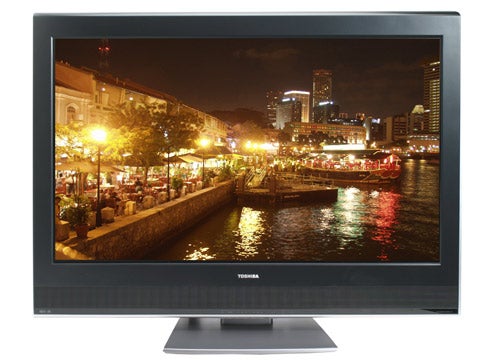
Verdict
Key Specifications
- Review Price: £1450.97
If you’re in the market for a new television right now you’re probably very confused. The roll out of high definition hardware, along with limited HD broadcasts has not been the simplest of things for consumers to grasp. At least the HD Ready logo has helped in some ways, but having a list of required boxes ticked is only part of the story. If you’ve read my roundup of budget HDTVs you’ll know that just having HD Ready certification doesn’t make a great TV.

Even for someone who’s entrenched in the technology industry as I am, the question of which TV to buy has been a tricky one. I’ve known for a long time that I need to buy myself a high definition TV, but I’ve been holding off for the right model to appear, and the right model was always going to have a 1080 line panel. You see, the majority of HDTVs on the market have a resolution of 1,366 x 768, which means that they only have enough physical lines to display a 720p signal without scaling. The problem is that TVs with true 1,920 x 1,080 resolution have been few and far between, with correspondingly stellar price points. I was therefore very pleased to see Toshiba’s new 42WLT66 TV back in April at the company’s annual product showcase event.
There are two very important aspects to the 42WLT66 – it has a native resolution of 1,920 x 1,080 and you can find it for sale at a truly unbelievable price. I’ll come onto the pricing a bit later, but for now let’s look at the specification.
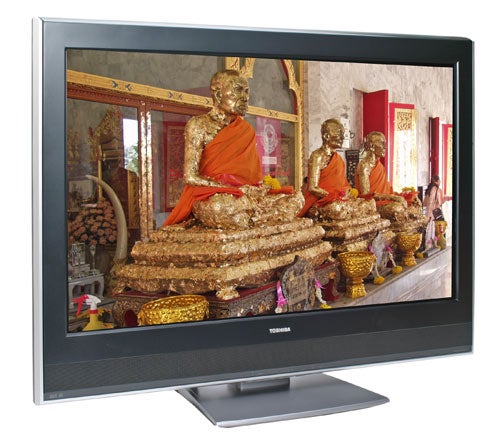
As the model name suggests, this is a 42in television, but it’s also worth mentioning that it falls under Toshiba’s new Regza branding. I’m not 100 per cent convinced about the Regza name, but then I guess it’s no different from Sony’s Bravia or Panasonic’s Viera branding. Obviously the jewel in the crown of this TV is the “full HD” 1,920 x 1,080 resolution, so when you feed the 42WLT66 a 1080i signal you’re getting a true 1080 line picture, rather then once scaled back to 768 lines, as with most of the current competition. There’s debate on whether a 720p or 1080i signal gives you better quality, due to the interlacing on the latter – however, since an LCD panel is progressive in nature, the TV will de-interlace the signal and the image viewed will be 1080p. I’m in the middle of writing a feature about this and many other aspects of HDTV, which should (hopefully) make everything clear.
As far as design goes, the 42WLT66 isn’t the best looking HDTV on the market, and to be honest, the dark grey matt finish looks a little dated. That’s not to say that it’s an ugly television, far from it in fact, just that Toshiba hasn’t made as big a design statement as the likes of Samsung or Sony, who have tried to create TVs that almost look better switched off than on. On the plus side, the bezel surrounding the screen is reasonably slim, with only a single Toshiba logo breaking the sleek lines. The speakers below the screen are also very unobtrusive, again keeping the overall look of the TV clean.
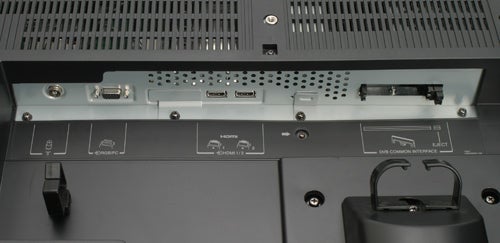
Despite the amazing price, Toshiba hasn’t compromised on the connection front. Whereas the majority of HDTVs still only sport a single HDMI port, the 42WLT66 has two. This is particularly handy since you’re likely to find more and more source devices with HDMI outputs – Sky HD, PS3, HD DVD, Blu-ray etc. Rounding off the HD Ready specification is a component video input, which will make Xbox 360 users very happy indeed. But Toshiba has also thrown in two SCARTs, a D-SUB PC input, as well as standard composite video inputs. That’s a pretty impressive complement of connection options and should negate the need for any kind of external video switching device. There’s also a CAM slot for augmenting the basic Freeview channels, if you so desire.
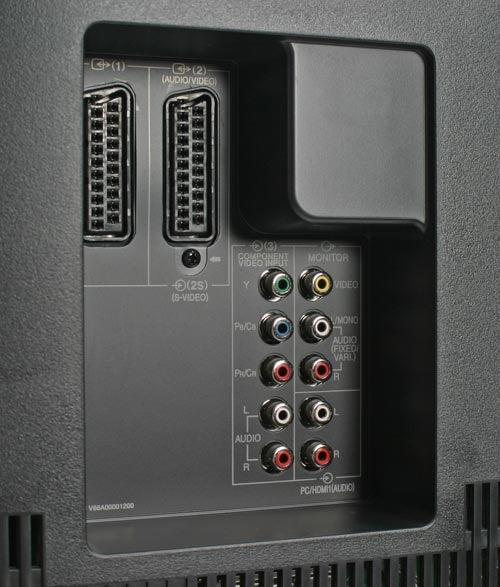
The 42WLT66 has a digital tuner built in, giving you access to all the Freeview channels. The Freeview EPG is also present, but the implementation seemed somewhat disappointing. There’s nothing missing from the feature set or functionality of the EPG, but the navigation is mind numbingly slow. Simply moving the cursor from one channel to another is incredibly frustrating, so much so that I wondered if the EPG had crashed when I first started using it.
The problem with the EPG is compounded by the very disappointing remote control. Now, I know that Toshiba had to make some compromises to hit the desired price point, but I would still expect a better remote control than the unit that ships with the 42WLT66. The remote just feels cheap and light, almost like the type of generic remote controls you get with budget TVs. Back in 1999 I bought a 40in widescreen rear projection TV from Toshiba and the remote control that I got with that TV was better than this one. Luckily this isn’t an insurmountable problem, because good quality universal remote controls are easily come by, while also stopping your coffee table from collapsing under the weight of a dozen remotes.
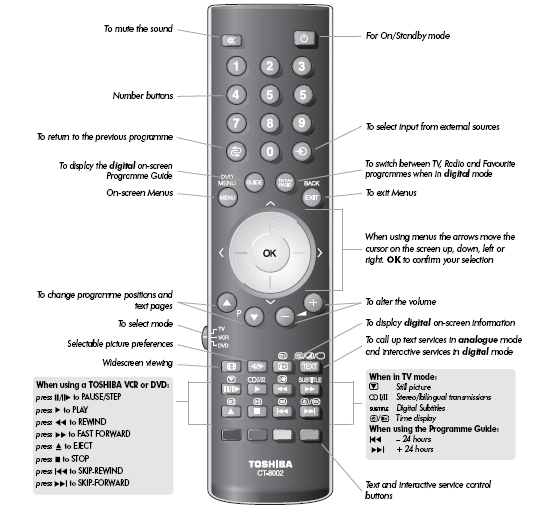
When it comes to picture quality the 42WLT66 ticks most of the right boxes. Colours are generally bright, vivid and lifelike, while blacks are reassuringly dark, but not at the expense of lost detail in low light areas. However, I did notice the slightest hint of motion smearing when watching some fast moving footage. To be fair I wouldn’t necessarily have noticed if I wasn’t looking for it, and when I was just watching TV rather than “evaluating” I didn’t notice it at all.
In general though Toshiba’s Active Vision LCD image processing gave a good account of itself, negating many of the problems that can plague LCD screens without any undue side effects. A good indication of how good the image processing is on an HDTV is how well the set handles standard definition sources, and I was surprised at how well the 42WLT66 dealt with standard definition pictures from its internal tuner. Considering that a 576 line SD source is being scaled to a 1080 line panel, there’s every chance that the result could be significantly worse picture quality than an old standard definition TV, but the 42WLT66 rose to the challenge well.
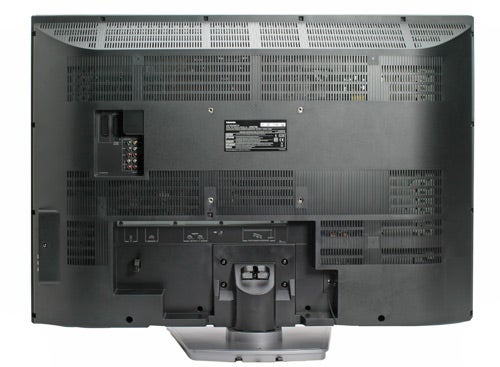
Of course you don’t buy a 42in full HD television to see how well it scales SD content, and it has to be said that feeding the 42WLT66 a diet of good high definition signals really brings out the best in it. Hooking up the Xbox 360 and switching it to output 1080i produced truly stunning results. I fired up Tomb Raider Legend and was genuinly surprised at how good it looked on the 42WLT66, especially since so much of the game takes place in dark and gloomy locales. Switching to DOA4, with it’s eye wateringly bright colours and detailed environments proved again that THIS is how Microsoft’s latest gaming platform is supposed to be viewed.
Even if you haven’t managed to get a Sky HD install yet, it’s worth hooking up a decent upscaling DVD player to this screen – you won’t be disappointed with the results. Considering that you can pick up Toshiba’s latest upscaling DVD player (the SD360E) for under £60, it won’t be hard to breath a new lease of life into your DVD collection before you start forking out for HD DVD or Blu-ray discs to replace them!
Even the sound from the integrated speakers is pretty good, but if you really do want the best possible audio experience without resorting to an external amp and speakers, Toshiba has the answer. For around £120 you can buy an external subwoofer to complement the 42WLT66 which adds a lot more bass response to the soundstage. Toshiba has even designed the sub so that it can be mounted on the rear of the TV using the VESA mount, making it completely invisible, assuming you don’t go down the wall mounting route.
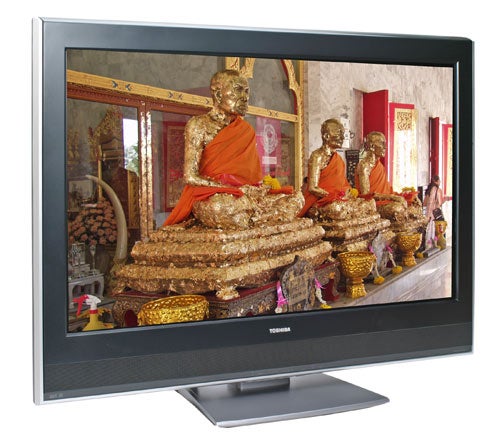
Putting everything else to one side, I can honestly say that the most amazing thing about the 42WLT66 is the price. After a little digging around the web, I’ve managed to find this TV on sale for under £1,500. Considering that just over a year ago you’d be spending over £5,000 on a 1080 LCD TV, Toshiba has done incredibly well to bring 42WLT66 in at such a bargain price. Basically, what you’ve got here is a 42in 1,920 x 1,080 HDTV for the price of a 1,366 x 768 model, and that can’t be bad.
”’Verdict”’
The Toshiba 42WLT66 isn’t without its faults, with the cheap and nasty remote control and unbelievably sluggish EPG being the main culprits. But when you consider the price, the connection options and the fact that you’re getting a full HD 1,920 x 1,080 panel, those faults seem very insignificant.
If you’ve been saving up for a TV to make the most of your Xbox 360 and Sky HD box, you’ll be hard pushed to find a set that gives you more bang for the buck than this one.
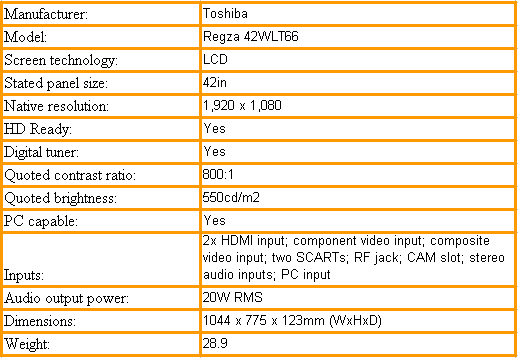
How we test televisions
We test every TV we review thoroughly over an extended period of time. We use industry standard tests to compare features properly. We’ll always tell you what we find. We never, ever, accept money to review a product.
Trusted Score
Score in detail
-
Value 10
-
Image Quality 8
-
Sound Quality 8

